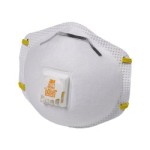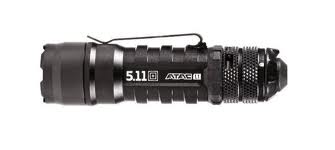Any time there is a pandemic scare, we see people on TV wearing face masks. But do they actually do anything? In most cases, the answer is no because the type of mask that people are wearing is just a dust mask. There is a type of mask that may offer some protection; the N95 particulate respirator. There are several types of N95 particulate respirator masks available. The NIOSH (National Institute for Occupational Safety and Health) approved N95 is one of these.
According to the UCLA Department of Epidemiology:
“The “N95” has a government efficiency rating that means the mask blocks about 95 percent of particles that are 0.3 microns in size or larger.”
Will the N95 be effective against a pandemic?
From the OSHA Fact Sheet on Healthcare Workplaces Classified as Very High or High Exposure Risk for Pandemic Influenza
“Use NIOSH-certified respirators that are N95 or higher. When both fluid protection (e.g., blood splashes) and respiratory protection are needed, use a “surgical N95” respirator that has been certified by NIOSH and cleared by the FDA.”
Did you catch the NIOSH-Certified? The CDC has a Healthcare Workplaces Classified as Very High or High Exposure Risk for Pandemic Influenza,it explains that not all N95 masks are created equal.
“How are NIOSH-Approved Particulate Filtering Respirators Classified?
Your employer may have told you that respiratory protection is needed because of inhalation hazards from airborne particles, which may include infectious agents. NIOSH-approved particulate filtering respirators can be used to protect you from these hazards. It is important for you to understand the classification system of NIOSH-approved respirators that use filters to remove particles from the air that is breathed through them.
There are ten classes of NIOSH-approved particulate filtering respirators available at this time. 95% is the minimal level of filtration approved by NIOSH. The N, R and P designations refer to the filter’s oil resistance as described in the table below.”
Also from OSHA on their effectiveness on Pandemic
“It should be noted that there is limited information on the use of surgical masks for the control of a pandemic in settings where there is no identified source of infection. There is no information on respirator use in such scenarios since modern respirators did not exist during the last pandemic. However, respirators are now routinely used to protect employees against occupational hazards, including biological hazards such as tuberculosis, anthrax, and hantavirus. The effectiveness of surgical masks and respirators has been inferred on the basis of the mode of influenza transmission, particle size, and professional judgment.”
Making and Keeping the Mask Effective
The most important thing when wearing any type of mask is having a tight seal, this will force the air you breathe through the respirator. The masks are meant for short term use and will break down in time; moisture from sweat will accelerate the breakdown.
Will I Wear a Mask in the Event of a Pandemic?
I agree with Patrick Breysse, an industrial hygienist at Johns Hopkins Bloomberg School of Public Health:
“He keeps N95 masks around the house for doing odd jobs. “If there were an event tomorrow, and I was in my home, I would seal my home as best I could,” he says, “and if I had one of these masks, I would put it on. Because why not?”
If this is a high concern for you, you should look for a gas mask with filters. That will offer much more protection than the N95, but they are not cheap and you will need multiple filters.
On a related note:
While the regular N95 masks might not be suitable in a pandemic, they still offer better protection from dust and other particles than a regular dust mask. Also, an N95 will keep your glasses from fogging up.
You can purchase a 3M 8511 NIOSH Particulate N95 Respirator with Valve, 10-Pack for just under $17.00.
Please click here to vote for Prepared Christian as a top Prepper site!
If you liked this article please think about sharing it on the social media listed below, thanks!










